Steel Products Prices North America

Regional Imports Through July: Cut-to-Length Plate
Written by Peter Wright
September 16, 2020
National level import reports do a good job of measuring the overall market pressure caused by the imports of individual products. The downside is that there are huge regional differences. This report examines cut-to-length plate imports by region through July 2020.
![]()
In July, CTL plate imports were down by 47.8 percent at the national level, but on a regional basis ranged from a 78 percent decline in the North Pacific ports to an increase of 12 percent in the Great Lakes region. The Great Lakes receives by far the most tonnage and accounts for 53 percent of the national total. Tonnage into the South Atlantic, North Pacific and across the Rio Grande is minimal.
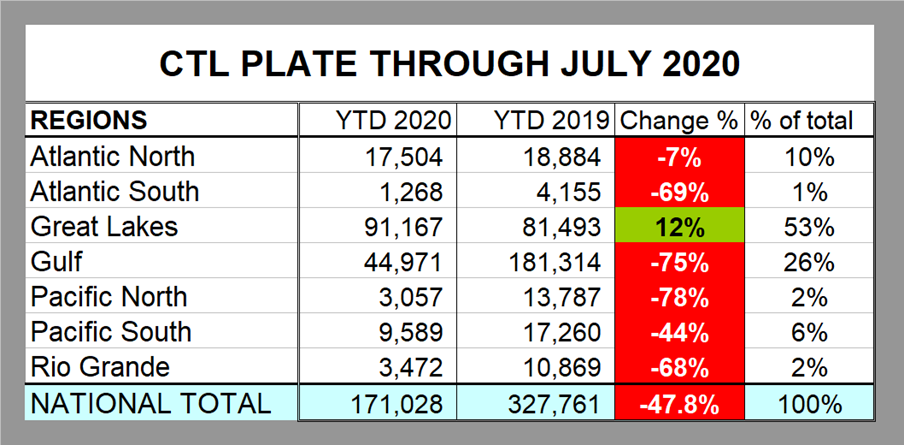
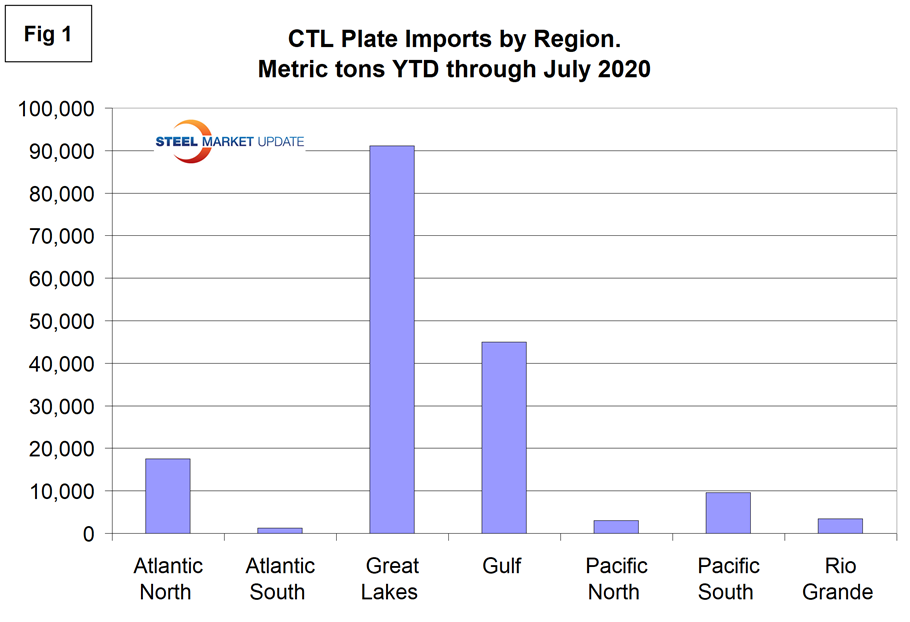
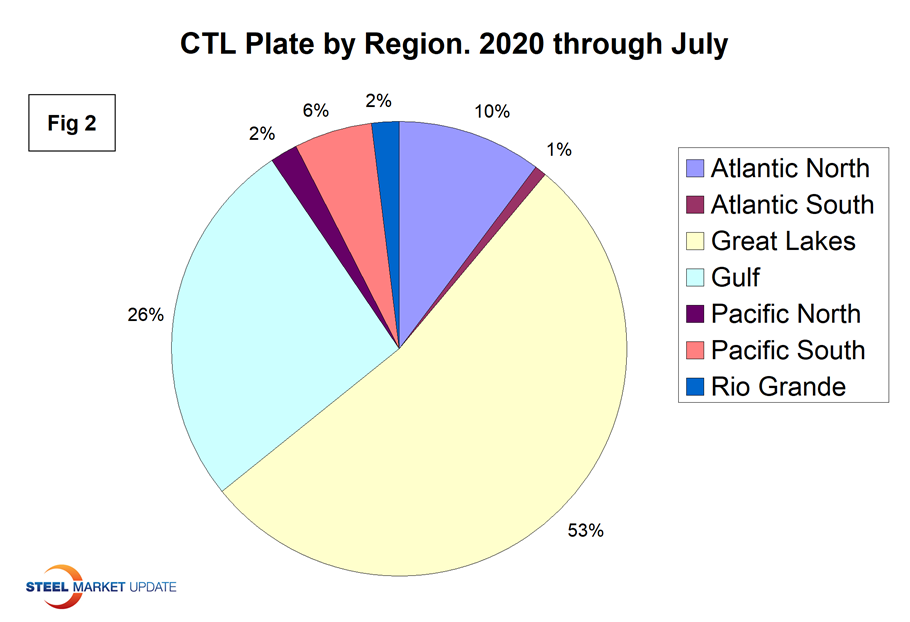
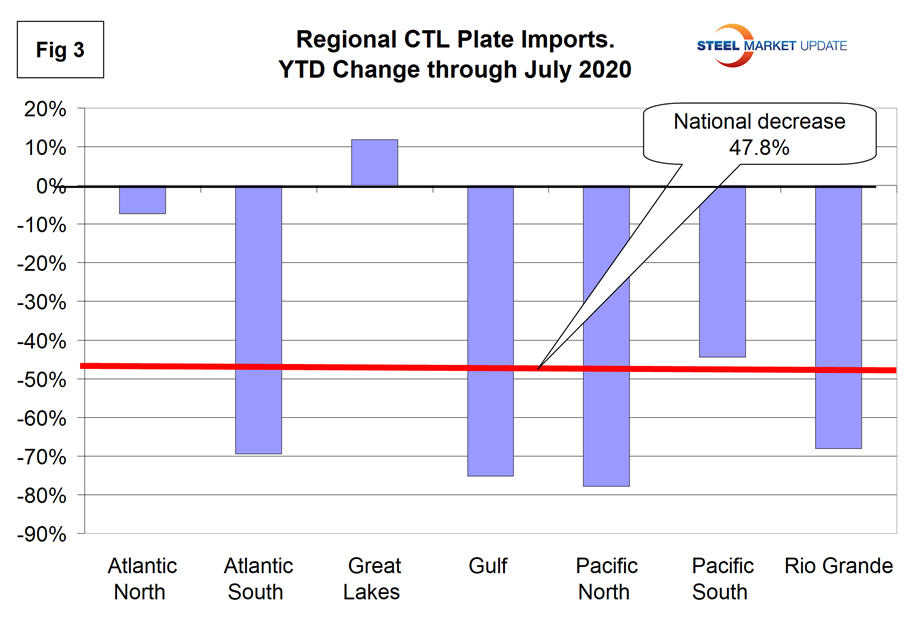
Note the tonnage scales on the Y axis of Figures 4-7 are not the same.
Pacific Coast: The tonnage into the West Coast as a whole has been declining since June 2017. There was zero tonnage into the Northern ports in July and only 49 tons into the South. The tonnage into both regions has been steadily declining since mid-2017.
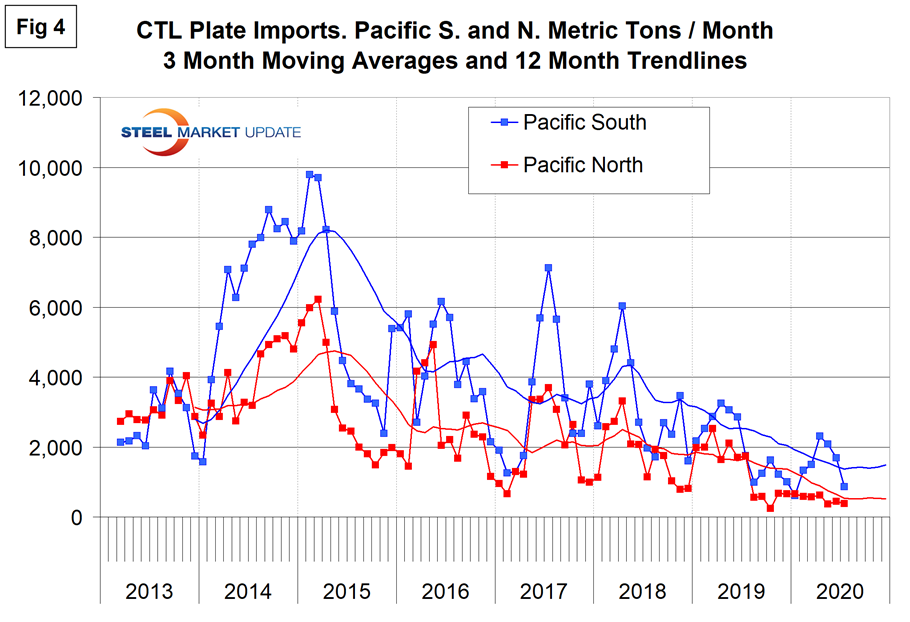
Atlantic Coast: The tonnage into the South Atlantic has been virtually zero for three years. Tonnage into the North has been low and erratic in the same time period, totaling only 17,000 tons in 2020 through July.
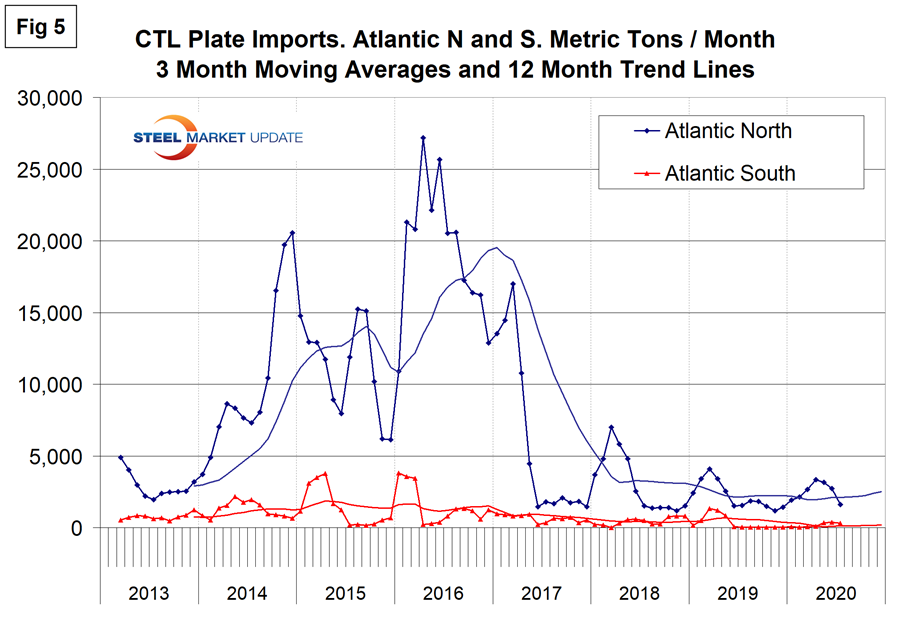
Gulf and Great Lakes: These two regions account for 79 percent of the national total with the Gulf at 26 percent and the Great Lakes at 53 percent. Both have been relatively stable since the beginning of 2017.
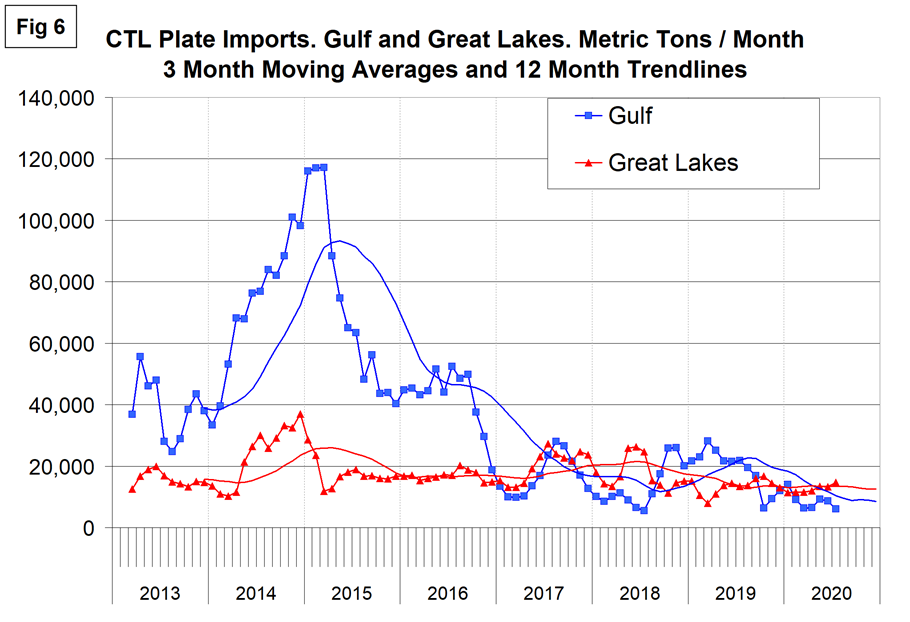
Rio Grande: Tonnage across the river has declined to a total of 845 tons since and including March this year. The trend has been down since the end of 2017.
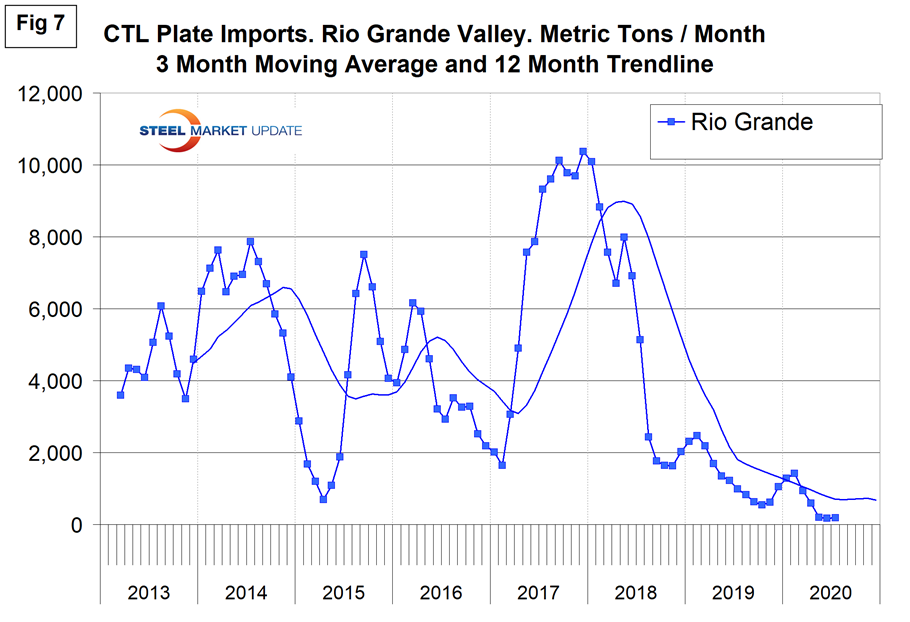
Notes: SMU presents a comprehensive series of import reports ranging from the first look at licensed data to a detailed look at volume by district of entry and source nation. The report you are reading now is designed to plug the gap between these two. This report breaks total year to date import tonnage of six flat rolled products into seven regions and the growth/contraction for each product and region. There is a summary table for each product group and a bar chart showing volume by region for the first seven months of 2020. These are reference documents with no specific comments. These charts have been developed as a guide for buyers and sellers to have a broader understanding of what’s going on in their own backyard.
Regions are compiled from the following districts:
Atlantic North: Baltimore, Boston, New York, Ogdensburg, Philadelphia, Portland ME, St. Albans and Washington. DC.
Atlantic South: Charleston, Charlotte, Miami, Norfolk and Savannah.
Great Lakes: Buffalo, Chicago, Cleveland, Detroit, Duluth, Great Falls, Milwaukee, Minneapolis and Pembina.
Gulf: Houston, New Orleans, Mobile, San Juan, St. Louis and Tampa.
Pacific North: Anchorage, Columbia Snake, San Francisco and Seattle.
Pacific South: Los Angeles and San Diego.
Rio Grande Valley: Laredo and El Paso.

Peter Wright
Read more from Peter WrightLatest in Steel Products Prices North America

CRU: Q3 will be the lowest point in current sheet price cycle
CRU Principal Analyst Shankhadeep Mukherjee expects a restocking cycle for steel sheet products in most parts of the world due to either low inventories or seasonally stronger demand.

CRU: US rebar and wire rod prices rise alongside S232 increase
CRU Senior Steel Analyst Alexandra Anderson discusses current market and pricing dynamics for long steel products in the US.

SMU Price Ranges: Sheet and plate steady ahead of Independence Day
Sheet and plate prices were little changed in the shortened week ahead of Independence Day, according to SMU’s latest check of the market.

Nucor maintains plate prices, opens August order book
Nucor aims to keep plate prices flat again with the opening of its August order book.

Nucor CSP remains level at $900/ton
Nucor maintained its weekly list price for hot-rolled (HR) coil this week, following two consecutive increases.
